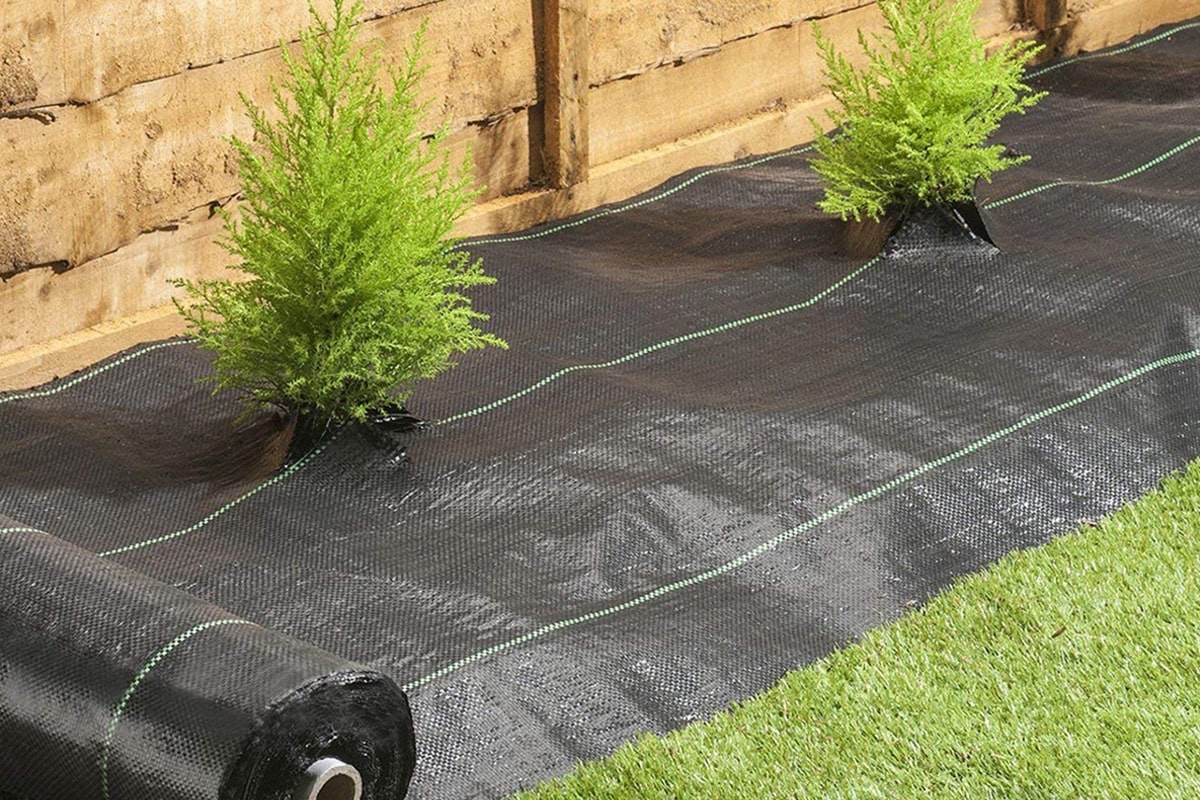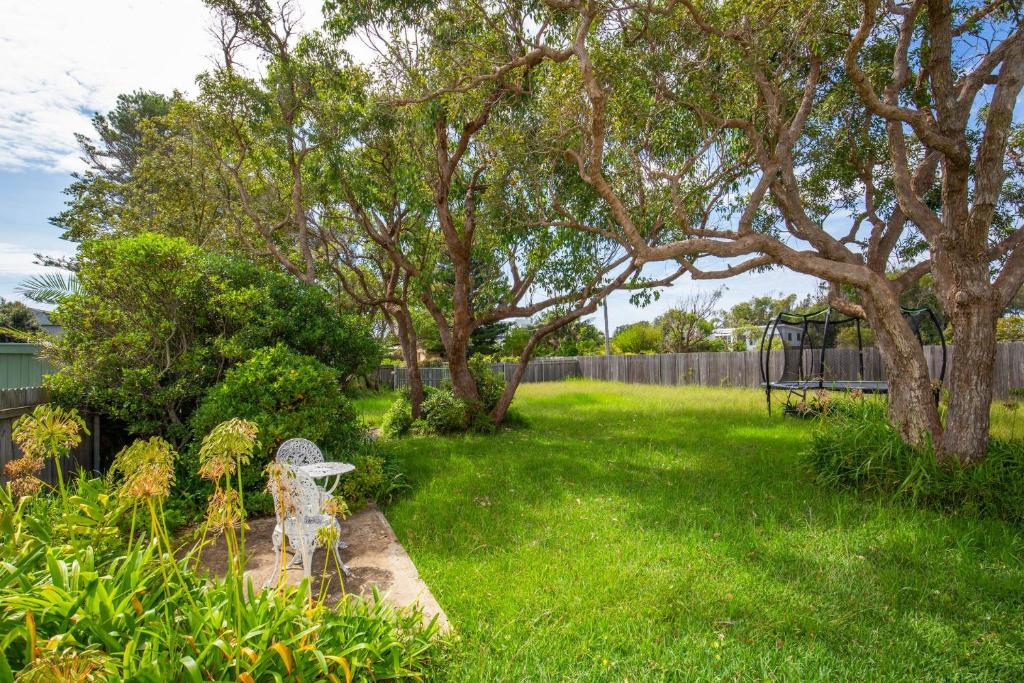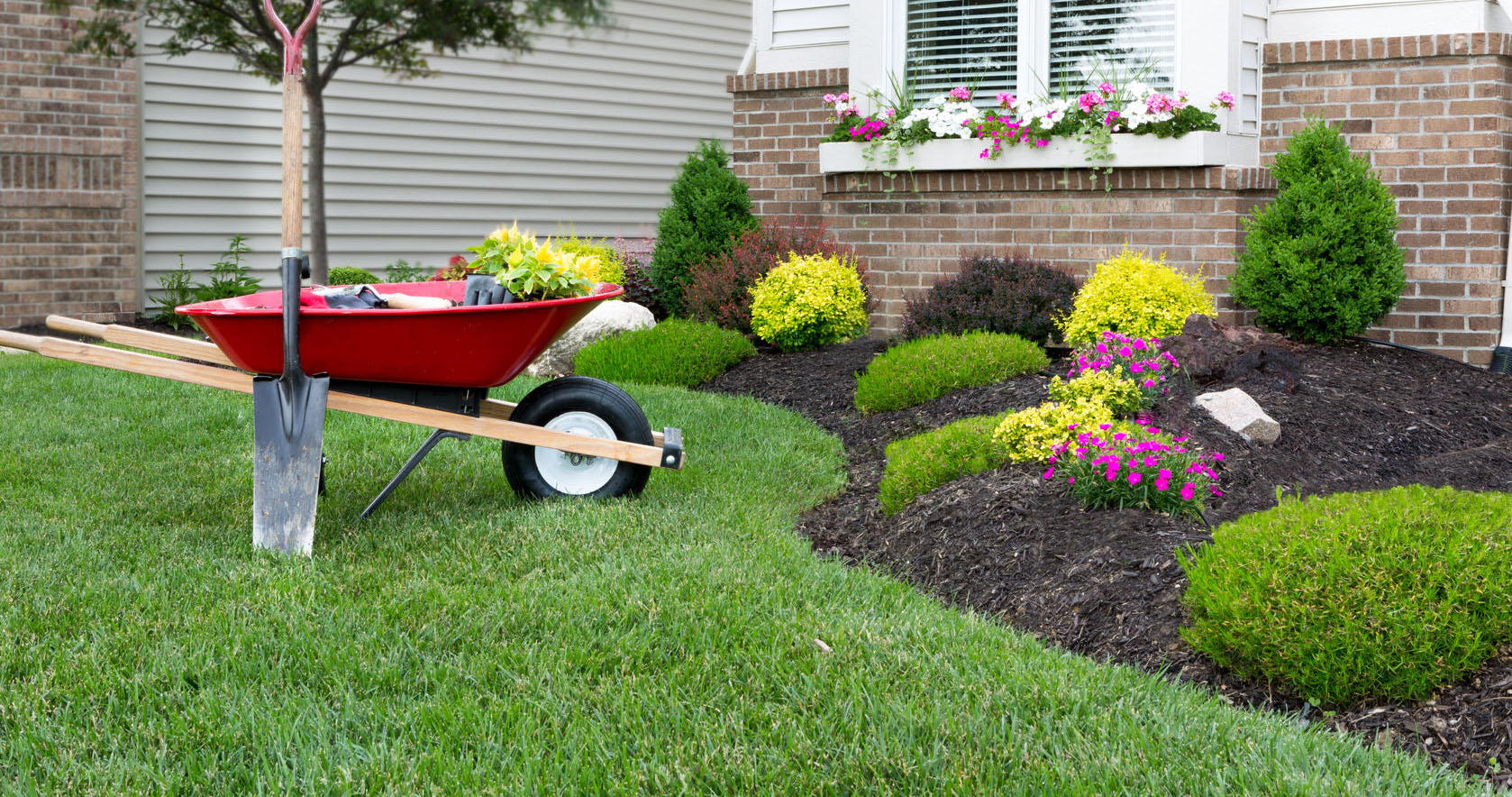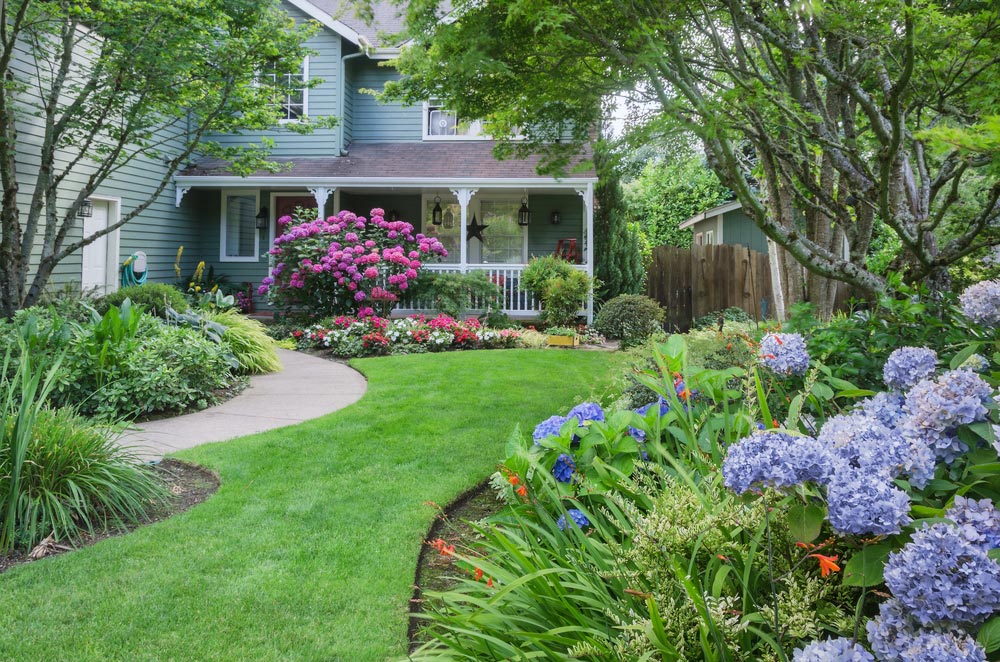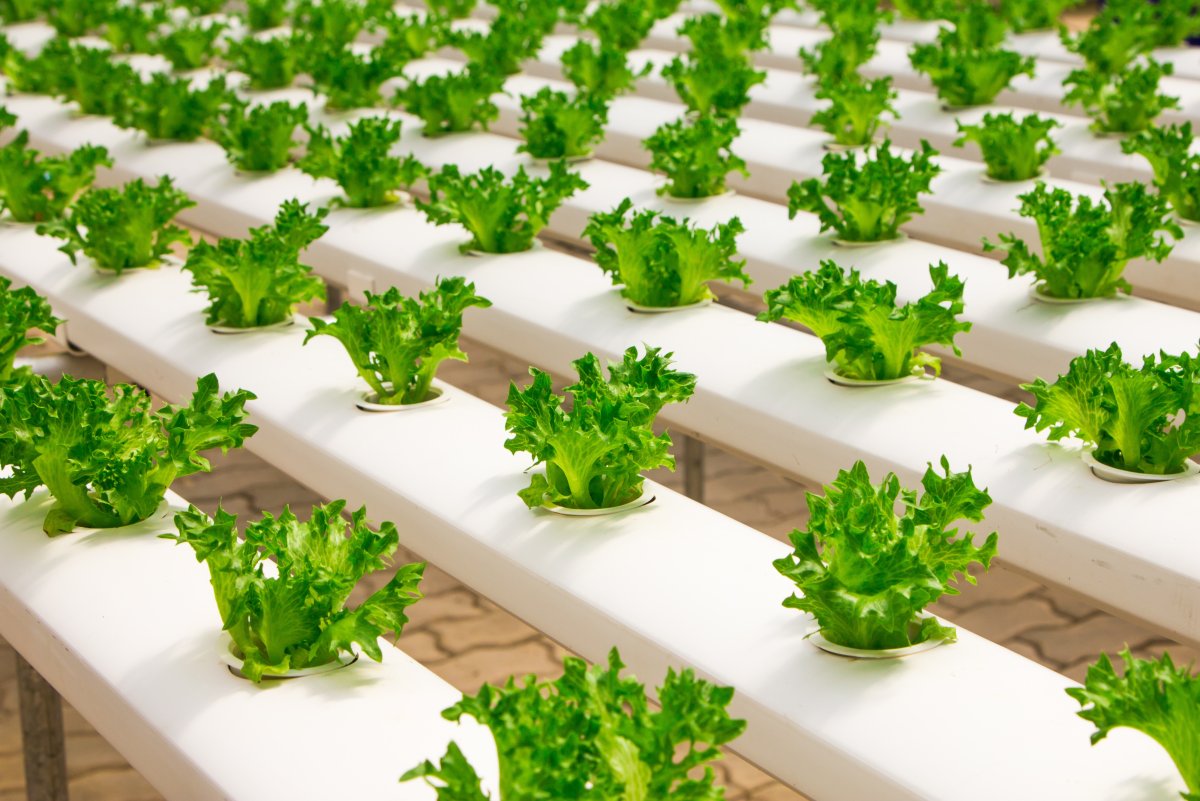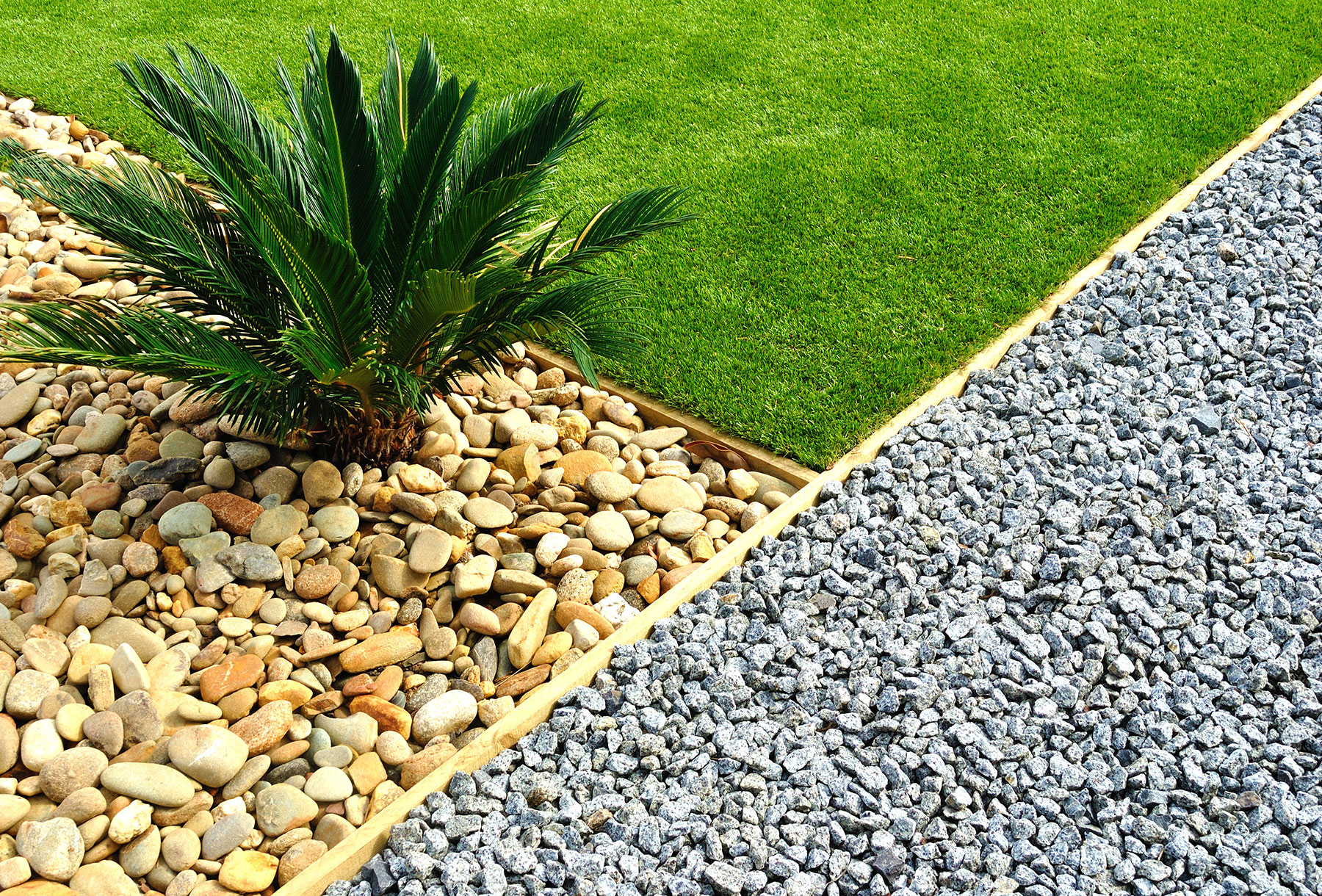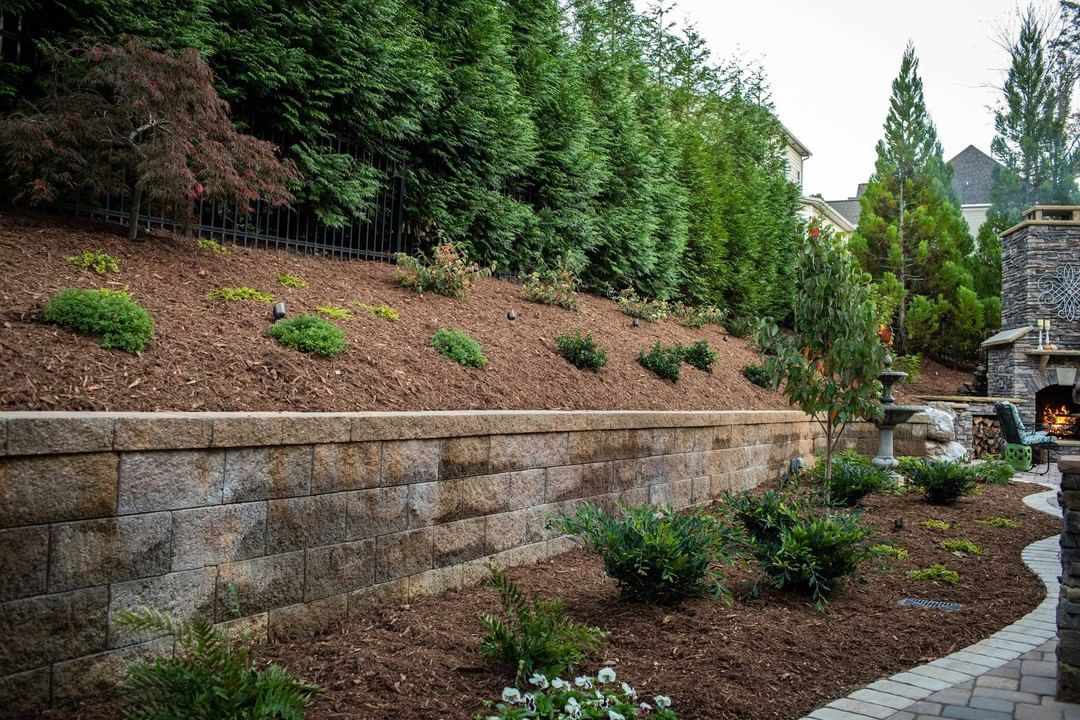Home>Gardening Tips and Tricks>Eco-Friendly Gardening>What Is Sustainable Landscaping
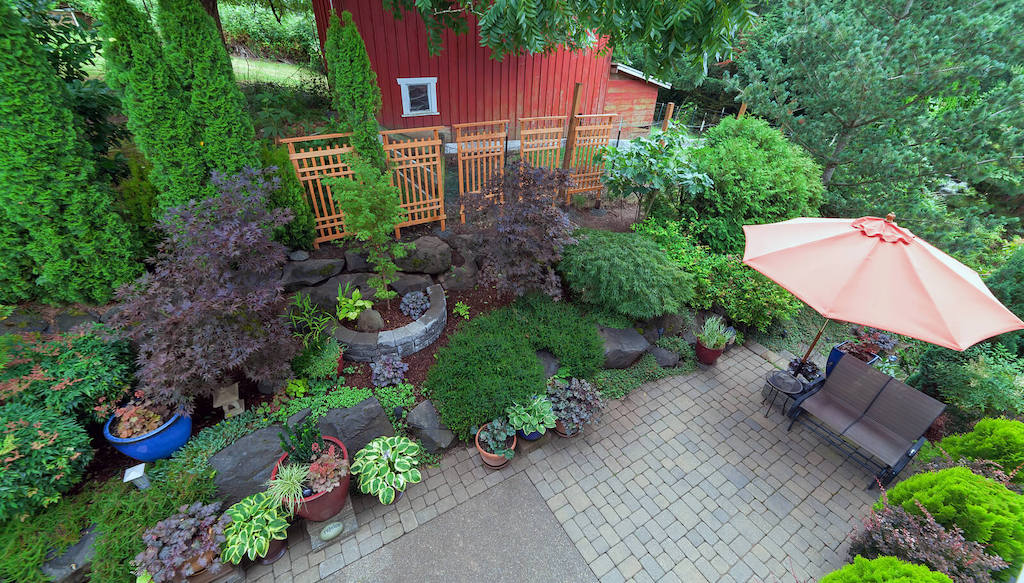

Eco-Friendly Gardening
What Is Sustainable Landscaping
Modified: February 10, 2024
Discover the benefits of eco-friendly gardening and sustainable landscaping. Learn how to create a beautiful and environmentally-conscious outdoor space.
(Many of the links in this article redirect to a specific reviewed product. Your purchase of these products through affiliate links helps to generate commission for Chicagolandgardening.com, at no extra cost. Learn more)
Table of Contents
- Introduction
- Definition of Sustainable Landscaping
- Benefits of Sustainable Landscaping
- Principles of Sustainable Landscaping
- Water Conservation in Sustainable Landscaping
- Native Plants in Sustainable Landscaping
- Soil Health and Organic Practices in Sustainable Landscaping
- Pollinator-Friendly Landscapes
- Wildlife Conservation in Sustainable Landscaping
- Energy Efficiency in Sustainable Landscaping
- Conclusion
Introduction
Welcome to the world of sustainable gardening! As our understanding of environmental issues deepens, more and more people are embracing eco-friendly practices in all aspects of their lives, including gardening. Eco-friendly or sustainable gardening, also known as eco-gardening, is a method of gardening that focuses on minimizing the negative impact on the environment while still creating beautiful and functional outdoor spaces.
In sustainable gardening, the goal is to create a balance between nature and human needs. It involves using techniques that promote conservation, efficiency, and the preservation of natural resources. By adopting a sustainable approach in our gardening practices, we can contribute to the health and well-being of our planet.
Sustainable landscaping goes beyond simply growing plants. It encompasses a holistic view of the entire outdoor space, including the design, maintenance, and the materials used. It takes into consideration factors such as water conservation, using native plants, promoting biodiversity, enhancing soil health, and optimizing energy efficiency.
Whether you have a small backyard garden, a balcony, or a larger landscape, sustainable gardening principles can be applied to any scale. Not only does sustainable gardening benefit the environment, but it also provides a more enjoyable and harmonious space for us to connect with nature.
In this article, we will explore the key aspects of sustainable gardening and how they can be implemented in your own outdoor space. From water conservation to attracting pollinators and wildlife, we will delve into the various ways in which you can create an eco-friendly and vibrant garden.
So, let’s dive in and discover the beauty and benefits of sustainable landscaping!
Definition of Sustainable Landscaping
Sustainable landscaping, also known as eco-friendly landscaping or green landscaping, is an approach to designing and maintaining outdoor spaces that prioritize environmental sustainability and conservation. It involves practices that minimize harm to the ecosystem, promote biodiversity, and prioritize the efficient use of resources.
Unlike conventional landscaping, which often relies heavily on chemical fertilizers, pesticides, excessive watering, and resource-intensive maintenance, sustainable landscaping takes a more holistic and ecological approach. It aims to create a harmonious relationship between nature and human activity, ensuring the long-term health and vitality of the environment.
At its core, sustainable landscaping seeks to strike a balance between the aesthetic appeal of the landscape and its functionality. It emphasizes the use of environmentally friendly techniques, materials, and practices that help reduce waste, conserve water, improve soil health, and support native flora and fauna.
One of the key aspects of sustainable landscaping is the reduction of water consumption. This is achieved by implementing efficient irrigation systems, such as drip irrigation or rainwater harvesting, and choosing drought-tolerant plant species. By minimizing water usage, sustainable landscaping helps conserve this precious resource while still maintaining a vibrant and visually appealing landscape.
Another important element of sustainable landscaping is the use of native plants. Native plants are those that naturally occur in a particular region or ecosystem. They are well adapted to the local climate, soil conditions, and wildlife. By incorporating native plants into the landscape, we can create habitats for local wildlife, attract beneficial insects, and reduce the need for excessive watering and chemical inputs.
In addition, sustainable landscaping promotes the use of organic practices and materials. This means avoiding the use of synthetic chemicals, such as pesticides and herbicides, and opting for organic fertilizers and natural pest control methods. Organic practices help improve soil health, reduce water pollution, and create a healthier environment for both plants and wildlife.
By embracing sustainable landscaping, we not only contribute to environmental conservation but also create a beautiful and functional outdoor space that enhances our well-being. The principles of sustainable landscaping can be applied to gardens of all sizes, from small urban balconies to sprawling landscapes, allowing everyone to play a role in protecting and preserving our planet.
Benefits of Sustainable Landscaping
Sustainable landscaping offers a multitude of benefits, both for the environment and for those who inhabit the outdoor spaces. By implementing eco-friendly practices and techniques, you can enjoy a range of advantages that go beyond just a visually appealing landscape. Here are some of the key benefits of sustainable landscaping:
- Environmental Conservation: Sustainable landscaping plays a crucial role in conserving natural resources and protecting the environment. Through practices such as water conservation, soil health improvement, and the use of native plants, sustainable landscapes help minimize water usage, reduce soil erosion, and preserve biodiversity.
- Water Conservation: One of the significant benefits of sustainable landscaping is the conservation of water. By implementing efficient irrigation systems, such as drip irrigation or rainwater harvesting, and choosing water-wise plants, you can significantly reduce water consumption in your landscape. This not only helps conserve this precious resource but also reduces your water bill.
- Improved Soil Health: Sustainable landscaping focuses on maintaining healthy soil by using organic matter, such as compost, to improve its fertility and structure. Healthy soil retains moisture better, reduces runoff, and provides a thriving environment for beneficial microorganisms. This creates a foundation for healthier plants and a more resilient landscape.
- Biodiversity and Habitat Creation: Sustainable landscapes support biodiversity by including native plants that provide food and shelter for local wildlife, including birds, butterflies, bees, and beneficial insects. By creating habitats for these creatures, you contribute to the overall ecological balance and help preserve important pollinators and natural pest control agents.
- Reduced Chemical Usage: Sustainable landscaping promotes organic practices and reduces the reliance on synthetic pesticides and fertilizers. By embracing natural pest control methods and using organic fertilizers, you create a safer environment for both humans and wildlife. This reduces air and water pollution, protects beneficial insects, and contributes to overall ecosystem health.
- Energy Efficiency: Well-planned sustainable landscapes can also contribute to energy efficiency in and around your home. By strategically placing trees and shade-loving plants, you can reduce the need for excessive air conditioning and protect your home from harsh winds. This leads to lower energy consumption and cost savings in the long run.
- Improved Well-being: Engaging with nature has been proven to have numerous benefits for our mental and physical well-being. Sustainable landscapes provide spaces for relaxation, recreation, and connecting with the natural world. Spending time in an eco-friendly garden can reduce stress, improve mood, and enhance overall mental health.
These are just a few of the many benefits that sustainable landscaping offers. By embracing eco-friendly practices in your outdoor space, you can create a thriving, beautiful landscape that positively impacts the environment and enriches your life.
Principles of Sustainable Landscaping
Sustainable landscaping is guided by a set of principles that promote environmental stewardship and the creation of resilient and thriving outdoor spaces. By following these principles, you can ensure that your landscape is eco-friendly and in harmony with nature. Here are the key principles of sustainable landscaping:
- Water Conservation: Minimizing water usage is a fundamental principle of sustainable landscaping. This can be achieved through the use of efficient irrigation systems, such as drip irrigation, and the incorporation of water-wise plants that require less water to thrive. Collecting rainwater for irrigation and implementing techniques like mulching can further conserve water in the landscape.
- Native and Adapted Plants: Choosing native plants that are well-suited to the local climate and soil conditions is essential for sustainable landscaping. Native plants are adapted to the specific environment, require less water, and provide habitat and food for local wildlife. In addition to natives, selecting adapted plants that are well-suited to the region can also contribute to a resilient and low-maintenance landscape.
- Soil Health: Prioritizing soil health is crucial for sustainable landscaping. Adding organic matter, such as compost, to the soil improves its structure, fertility, and water-holding capacity. This encourages strong root development and reduces the need for chemical fertilizers. Minimizing soil compaction and erosion through practices like mulching and the use of ground covers also contribute to soil health.
- Biodiversity: Promoting biodiversity is an integral part of sustainable landscaping. By incorporating a variety of plant species, you create habitats for beneficial insects, birds, and other wildlife. This helps maintain a balanced ecosystem, enhances natural pest control, and contributes to the overall health of the landscape.
- Chemical-Free Practices: Avoiding the use of synthetic pesticides and fertilizers is another principle of sustainable landscaping. Instead, focus on natural pest control methods, such as companion planting and attracting beneficial insects. Use organic fertilizers and amendments to nourish the soil and promote plant health.
- Resource Efficiency: Sustainable landscaping aims to reduce waste and maximize resource efficiency. This includes utilizing materials that are locally sourced and environmentally friendly, such as recycled products. Properly managing garden waste through composting and recycling helps minimize landfill contributions and provides nutrient-rich soil amendments.
- Energy Efficiency: Designing the landscape in a way that takes advantage of natural elements can improve energy efficiency. Strategic placement of trees and shrubs can provide shade in the summer, reducing the need for air conditioning. Similarly, creating windbreaks with vegetation can protect the landscape and nearby structures from harsh winds in winter.
By incorporating these principles into your landscaping practices, you can create a sustainable and resilient outdoor space that not only benefits the environment but also provides beauty and enjoyment for years to come.
Water Conservation in Sustainable Landscaping
Water conservation is a key principle of sustainable landscaping. By implementing water-saving techniques and practices, you can significantly reduce water usage in your outdoor space while still maintaining a vibrant and healthy landscape. Here are some strategies for water conservation in sustainable landscaping:
- Efficient Irrigation: The first step in water conservation is to use efficient irrigation methods. Drip irrigation systems deliver water directly to the root zone of plants, minimizing water loss due to evaporation and runoff. This targeted approach ensures that plants receive the needed moisture while reducing water waste.
- Rainwater Harvesting: Collecting rainwater is an excellent way to conserve water in sustainable landscaping. Install rain barrels or larger storage tanks to capture rainwater from roofs and downspouts. This harvested water can be used for watering plants during dry periods, reducing the reliance on freshwater sources.
- Smart Irrigation Controllers: Utilize smart irrigation controllers that adjust watering schedules based on current weather conditions and plant needs. These controllers use sensors and weather data to determine the optimal irrigation frequency and duration, ensuring that water is not wasted. Some advanced systems can even be operated remotely, allowing for greater control and efficiency.
- Xeriscaping: Consider xeriscaping, a landscaping approach that focuses on using drought-tolerant plants and reducing the need for supplemental irrigation. By selecting plants that are well adapted to the local climate, you can create a beautiful and low-water landscape that requires minimal watering.
- Soil Amendments: Improving the soil’s water-holding capacity through organic amendments, such as compost, can make a significant difference in water conservation. Amended soil retains moisture better, reducing the frequency of watering. It also enhances root growth and nutrient absorption, leading to healthier plants that are more resilient to drought conditions.
- Mulching: Mulching is an effective water conservation technique. A layer of organic mulch, such as wood chips or straw, helps retain soil moisture by reducing evaporation. It also suppresses weed growth, which minimizes competition for water resources. Apply a thick layer of mulch around plants, leaving space around the base to prevent moisture-related issues.
- Proper Timing: Watering your landscape during the cooler parts of the day, such as early morning or evening, reduces water loss due to evaporation. Avoid watering during the hottest parts of the day, as the water may evaporate before reaching the plant roots.
- Monitor and Adjust: Regularly monitor your landscape’s water needs and adjust irrigation accordingly. Take note of rainfall patterns, plant growth, and signs of stress. By being attentive to the water requirements of your landscape, you can avoid overwatering and promote water conservation.
Implementing these water conservation strategies not only helps preserve this valuable resource but also reduces water bills and promotes a sustainable and resilient landscape.
Native Plants in Sustainable Landscaping
One of the key principles of sustainable landscaping is the use of native plants. Native plants are those that naturally occur in a particular region or ecosystem. Integrating native plants into your landscape design offers numerous benefits and plays a vital role in ensuring a sustainable and resilient outdoor space. Here’s why native plants are essential in sustainable landscaping:
- Adaptation to Local Conditions: Native plants have evolved over time to thrive in the local climate, soil conditions, and rainfall patterns. They are well adapted to the specific region and require less water, fertilizer, and maintenance than non-native plants. By using native plants, you reduce the need for excessive watering and chemical inputs, resulting in a more sustainable landscape.
- Promoting Biodiversity: Native plants provide habitat and food sources for local wildlife, including birds, butterflies, bees, and beneficial insects. They play a crucial role in supporting pollinators and preserving biodiversity. By integrating native plants into your landscape, you create an ecosystem that contributes to the overall ecological balance and enhances the natural beauty of your outdoor space.
- Drought Tolerance: Many native plants have adapted to survive in arid or drought-prone regions. They have developed mechanisms to conserve water, such as deep root systems and waxy leaf coatings. By incorporating drought-tolerant native plants into your landscape, you can reduce water usage without sacrificing the visual appeal of your garden.
- Low Maintenance: Native plants are generally low maintenance once established. They are accustomed to the local climate and pests, reducing the need for chemical interventions and excessive pruning. Native landscapes tend to be more self-sustaining and require less time and effort to maintain, making them ideal for busy gardeners or those looking to minimize their ecological footprint.
- Preserving Genetic Diversity: Native plants are part of the region’s genetic heritage and play a crucial role in preserving local genetic diversity. By using native species in your landscape, you help protect important genetic resources and maintain the unique identity of your region’s flora. This is especially important in the face of habitat loss and increasing pressures on natural ecosystems.
- Educational Opportunities: Native plants offer educational opportunities for both children and adults. By including native plants in your landscape, you can teach others about the importance of biodiversity, conservation, and the role of native plants in supporting local ecosystems. Native plants can spark interest, curiosity, and a deeper understanding of the natural world, fostering a connection to the environment.
When selecting native plants for your sustainable landscape, consider the local microclimate, soil conditions, and the specific needs of the plant species. Collaborate with local native plant nurseries or experts to ensure that you are choosing the right plants for your region. By incorporating native plants into your landscaping, you contribute to the preservation of natural ecosystems and create a sustainable and vibrant outdoor space.
Soil Health and Organic Practices in Sustainable Landscaping
Soil health is a fundamental aspect of sustainable landscaping. Healthy soil is the foundation for a thriving landscape, providing the necessary nutrients, water-holding capacity, and structure for plants to grow and flourish. By prioritizing soil health and adopting organic practices, you can create a sustainable and environmentally-friendly garden. Here’s why soil health and organic practices are essential in sustainable landscaping:
- Improved Nutrient Availability: Healthy soil is rich in organic matter, which provides a steady supply of nutrients to plants. By incorporating organic materials such as compost, leaf litter, or well-rotted manure into the soil, you increase its fertility and improve the availability of essential nutrients. This promotes vigorous plant growth without the need for synthetic fertilizers.
- Enhanced Soil Structure and Water Holding Capacity: Organic matter improves the soil’s structure, allowing for better water infiltration, root penetration, and air circulation. It helps sandy soils retain moisture and improves drainage in heavy clay soils. By maintaining good soil structure, you can prevent issues such as erosion, compaction, and waterlogging, which can negatively impact plant health and ecosystem function.
- Reduced Erosion and Runoff: Healthy soil is more resistant to erosion, as organic matter acts as a binding agent, keeping soil particles together. By incorporating organic practices and minimizing disturbances like over-tilling or removing vegetation, you can reduce soil erosion and prevent the loss of valuable topsoil. This preserves the soil’s fertility and prevents sediment runoff into waterways.
- Promotion of Beneficial Soil Microorganisms: Organic practices promote the growth of beneficial soil microorganisms, including bacteria, fungi, and earthworms. These organisms help break down organic matter, release nutrients, improve soil structure, and suppress plant diseases. Creating a healthy habitat for these microorganisms through practices like adding compost and avoiding harmful chemicals fosters a vibrant and resilient soil ecosystem.
- Natural Pest and Disease Control: Organic practices in sustainable landscaping prioritize natural pest and disease control methods. By fostering a diverse and balanced ecosystem, you encourage beneficial insects, birds, and other organisms that help control pests naturally. Avoiding the use of synthetic pesticides preserves the health of these beneficial organisms and prevents their disruption in the ecosystem.
- Minimized Chemical Pollution: Organic practices minimize chemical pollution in the environment. By avoiding the use of synthetic chemicals, such as pesticides and herbicides, you prevent the runoff of these harmful substances into water bodies. This helps protect aquatic life and maintains water quality. Additionally, organic practices contribute to cleaner air and healthier ecosystems overall.
- Long-term Sustainability and Resilience: Prioritizing soil health and organic practices in sustainable landscaping promotes long-term sustainability and resilience. Healthy soil provides a strong foundation for plants to withstand environmental stressors, such as drought or extreme temperatures. It also reduces the need for frequent input of synthetic fertilizers, leading to cost savings and a more environmentally-friendly approach.
By enriching your soil with organic matter, practicing composting, and minimizing the use of chemicals, you can create a thriving and sustainable landscape that supports healthy plant growth, conserves natural resources, and promotes a balanced ecosystem.
Pollinator-Friendly Landscapes
Pollinators, including bees, butterflies, birds, and other insects, play a crucial role in the reproductive success of many plants. However, pollinator populations worldwide are facing significant challenges due to habitat loss, pesticide use, and other factors. Creating pollinator-friendly landscapes is a vital part of sustainable gardening and has numerous benefits for both the environment and our own well-being. Here’s why pollinator-friendly landscapes are essential:
- Promoting Biodiversity: Pollinator-friendly landscapes support biodiversity by providing a habitat for a variety of plants and insects. By including a diverse range of flowering plants that bloom throughout the year, you attract different pollinators and create a vibrant ecosystem. This helps maintain the balance of the local ecosystem and contributes to the overall health of the environment.
- Pollination of Food Crops: Many of our food crops rely on pollinators for successful pollination and fruit set. By creating pollinator-friendly landscapes, you support the pollination of food crops, ensuring a bountiful harvest. This is particularly important for home gardens and urban agriculture, where pollinators may be limited due to surrounding development.
- Preserving Native Plants: Pollinator-friendly landscapes often prioritize the use of native plants, which are well-adapted to the local climate and support native pollinator species. By including native flowering plants, you contribute to the preservation of local plant species and their associated pollinators. This helps maintain the unique biodiversity of your region.
- Attracting Beneficial Insects: Pollinator-friendly landscapes not only attract pollinators but also beneficial insects that act as natural pest control agents. Many predatory insects, such as ladybugs and lacewings, feed on garden pests, reducing the need for chemical pesticides. By providing habitat and food sources for these beneficial insects, you create a balanced ecosystem that promotes natural pest control.
- Enhancing Garden Beauty: Pollinator-friendly landscapes are not only functional but also aesthetically pleasing. The vibrant colors and fragrances of flowering plants attract pollinators, adding beauty and life to your garden. By designing your landscape with pollinators in mind, you can create a visually stunning and vibrant outdoor space.
- Education and Awareness: Pollinator-friendly landscapes provide an opportunity to educate and raise awareness about the importance of pollinators and their role in ecosystems. By engaging in educational activities and sharing information with others, you can inspire more people to create pollinator-friendly habitats and contribute to the conservation of these vital species.
To create a pollinator-friendly landscape, include a variety of flowering plants that provide nectar and pollen throughout the growing season. Choose native plants whenever possible, as they are well-adapted to the local climate and support local pollinator populations. Incorporate plants with different flower shapes and colors to attract a diverse range of pollinators. Provide water sources, shelter, and nesting opportunities to create a complete habitat for pollinators.
By designing and nurturing a pollinator-friendly landscape, you play a vital role in conserving pollinators, supporting biodiversity, and contributing to the health of our ecosystems.
Wildlife Conservation in Sustainable Landscaping
Sustainable landscaping goes beyond aesthetics and functional design; it also plays a vital role in wildlife conservation. By creating an environment that mimics natural habitats and supports diverse species, you can contribute to the protection and preservation of local wildlife. Here’s why wildlife conservation is an essential component of sustainable landscaping:
- Habitat Creation: Sustainable landscapes provide crucial habitats for wildlife. By incorporating a variety of native plants, trees, shrubs, and ground covers, you create food sources, shelter, and nesting areas for birds, mammals, reptiles, and insects. These habitats serve as valuable stepping stones in urban and suburban areas, connecting fragmented natural spaces and promoting wildlife movement.
- Biodiversity Support: Sustainable landscaping contributes to the maintenance of biodiversity. By creating a diverse range of plants, you attract a variety of insects, such as butterflies and bees, which are essential pollinators. These insects, in turn, attract birds and other predators, maintaining a healthy balance in the ecosystem. By supporting biodiversity, you help sustain a resilient and thriving environment.
- Providing Food and Water: Sustainable landscapes offer a sustainable food source for wildlife, especially when native plants are included. Native trees and shrubs bear fruits, nuts, and seeds, providing nourishment for birds, squirrels, and other wildlife. Incorporating water features, such as birdbaths or small ponds, offers a vital water source for animals, particularly during dry periods.
- Protecting Endangered Species: Sustainable landscaping can play a role in protecting and preserving endangered species. By researching and selecting plants that are crucial for the survival of specific species, you can provide a habitat that supports their needs. Native plants often have complex relationships with certain specialized pollinators or herbivores, making their conservation efforts imperative for maintaining delicate ecosystems.
- Reducing Wildlife Conflicts: Sustainable landscaping can help reduce conflicts between wildlife and humans. By providing suitable habitats and food sources in designated areas, you can draw wildlife away from human dwellings and gardens. This helps prevent unintended damage to property and promotes coexistence with wildlife in a harmonious manner.
- Educational Opportunities: Sustainable landscapes offer educational opportunities to learn about local wildlife and the importance of conservation. By observing and documenting wildlife behavior in your own backyard, you can inspire others to appreciate and protect the natural world. Sharing information and engaging in educational activities can raise awareness and foster a sense of environmental stewardship.
When creating a wildlife-friendly landscape, focus on providing a variety of plant species that offer food and shelter throughout the year. Incorporate native plants and trees that provide different heights, bloom times, and seed-bearing capabilities to attract a wide range of wildlife. Consider leaving some areas of your yard undisturbed or create brush piles and deadwood habitats for nesting and shelter. Minimize pesticide use to protect beneficial insects and other wildlife.
By integrating wildlife conservation into your sustainable landscaping practices, you can contribute to a healthier environment for both wildlife and humans, safeguarding biodiversity and supporting the delicate balance of ecosystems.
Energy Efficiency in Sustainable Landscaping
Energy efficiency is an important consideration in sustainable landscaping. By incorporating energy-saving strategies into your outdoor space, you can reduce energy consumption, lower utility costs, and lessen your environmental impact. Here’s why energy efficiency is a key aspect of sustainable landscaping:
- Reduced Cooling Needs: Well-planned landscaping can provide shade and reduce the need for air conditioning. Strategically placed trees, shrubs, and vines can block the harsh sun, preventing excessive heat buildup in and around your home. By using natural shade to your advantage, you can significantly reduce your cooling needs and save energy.
- Windbreaks: Incorporating windbreaks in your landscape design can help reduce heat loss during cold seasons. Planting trees or tall shrubs on the windward side of your property creates a barrier that blocks cold winds and can lower heating bills. This efficient use of trees not only saves energy but also creates a more comfortable outdoor environment.
- Proper Plant Selection: Selecting the right plants for your climate can improve energy efficiency. Deciduous trees and vines that provide ample shade in the summer but allow sunlight to penetrate in the winter can help regulate indoor temperatures naturally. In contrast, evergreen trees and shrubs can act as windbreaks and provide year-round protection against cold winds when strategically placed. These plant choices can reduce the need for artificial heating and cooling.
- Green Roofs and Living Walls: Green roofs and living walls, where vegetation is incorporated into building structures, offer energy efficiency benefits. These features provide insulation, reducing heat gain in summer and heat loss in winter. They can help improve indoor comfort levels and reduce the need for artificial temperature control.
- Water Conservation and Energy: Sustainable landscaping practices that focus on water conservation also contribute to energy efficiency. By minimizing water usage and using efficient irrigation methods, such as drip irrigation, you reduce the energy required to pump and distribute water. Additionally, collecting and using rainwater for irrigation can further decrease the energy needed for water supply.
- Efficient Outdoor Lighting: Outdoor lighting can be optimized for energy efficiency. Use LED bulbs in outdoor fixtures, which consume less energy and last longer than traditional lighting options. Consider installing motion sensors or timers to control outdoor lighting, ensuring that it is only activated when needed. Properly directed lighting can enhance security while minimizing energy waste.
- Sustainable Materials: Using sustainable materials in your outdoor hardscaping, such as recycled materials or locally sourced stone, reduces energy consumption associated with manufacturing and transportation. Additionally, materials with high thermal mass, like stone or concrete, can absorb and store heat during the day, releasing it slowly at night and reducing temperature fluctuations.
By incorporating energy-efficient practices into your sustainable landscape design, you can create a more comfortable and cost-effective outdoor space while minimizing your ecological footprint.
Conclusion
Sustainable landscaping is not just a trend; it is a crucial approach to gardening that promotes environmental responsibility and conservation. By implementing eco-friendly practices and principles, you can create a beautiful and functional outdoor space while minimizing the negative impact on the environment. From water conservation and the use of native plants to soil health and energy efficiency, sustainable landscaping encompasses a wide range of practices that contribute to a more sustainable future.
Water conservation is a key consideration in sustainable landscaping, aiming to minimize water usage through efficient irrigation, rainwater harvesting, and drought-tolerant plant selections. The use of native plants not only reduces water requirements but also promotes biodiversity, supports local wildlife, and contributes to the preservation of genetic diversity. Enhancing soil health through organic practices and the use of compost promotes a thriving ecosystem and reduces the need for chemical fertilizers.
Pollinator-friendly landscapes attract important pollinators, ensuring successful plant pollination and contributing to food production. Wildlife conservation in sustainable landscaping creates habitats and supports local wildlife populations, promoting biodiversity and preserving endangered species. Energy efficiency measures, such as strategic tree placement, windbreaks, and efficient outdoor lighting, reduce energy consumption and lower utility costs.
In conclusion, sustainable landscaping offers numerous benefits for both the environment and individuals. It not only helps conserve natural resources, but it also creates beautiful, low-maintenance landscapes that are in harmony with nature. By implementing sustainable practices in your own outdoor space, you can make a positive impact, contribute to environmental conservation, and inspire others to embrace eco-friendly gardening. So, start transforming your landscape into an oasis of sustainability and create a better future for our planet.
